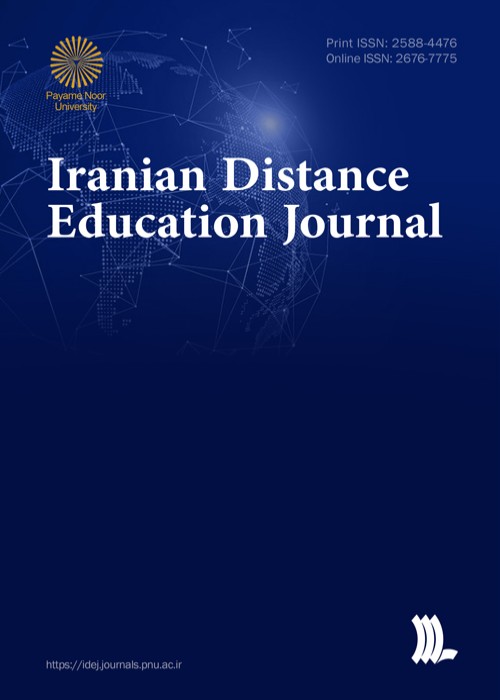Pathology of the virtual evaluation system in elementary school
Author(s):
Article Type:
Research/Original Article (دارای رتبه معتبر)
Abstract:
The aim of the current research was the pathology of the virtual evaluation system in the elementary school. The current research is applied in terms of purpose and descriptive in terms of survey type. The population of this research included all primary school teachers in Miandoab city in the academic year of 2019-1400. Using proportional stratified random sampling method and using Morgan and Karjesi table, the sample size of 201 teachers was determined. A researcher-made questionnaire was used to collect data. The face validity of the questionnaire was confirmed by experts and professors of the Department of Educational Sciences. Descriptive statistics (frequency, mean and standard deviation, variance, etc.) and inferential statistics (one-sample t-test) were used to analyze the data. The data was analyzed using spss22 software. The results of the research indicated that the items (attention to the correlation of evaluation methods with general goals and behavior, the level of student readiness to enter electronic courses in evaluation, the way the teacher interacts with managers, other teachers, staff and knowledge students in the evaluation of the virtual environment, the level of knowledge and skills in the evaluation of virtual education) are management aspects in the pathology of virtual evaluation of the primary course; and cases (the need for hardware and software and web browsers in evaluation; the possibility of adding evaluation methods by the teacher; taking advantage of digital media and resources in evaluation; adapting the technological architecture to the evaluation schedule of the course; using educational tools for student evaluation; use of technical standards to share questions, assignments and feedback in evaluation) are the aspects of electronic technology in the pathology of virtual evaluation of the primary course; and issues (the extent of using inter-curricular questions for self-testing and encouraging content learning in evaluation; paying attention to setting the structure of each lesson and dividing it into sections of introduction, content, assignments and evaluation; integrating curriculum and electronic environment tools in virtual education in evaluation; the degree of participation of students' knowledge in the learning process in evaluation;
Keywords:
Language:
English
Published:
Journal of Iranian Distance Education, Volume:5 Issue: 2, Summer-Autumn 2023
Pages:
62 to 72
magiran.com/p2696103
دانلود و مطالعه متن این مقاله با یکی از روشهای زیر امکان پذیر است:
اشتراک شخصی
با عضویت و پرداخت آنلاین حق اشتراک یکساله به مبلغ 1,390,000ريال میتوانید 70 عنوان مطلب دانلود کنید!
اشتراک سازمانی
به کتابخانه دانشگاه یا محل کار خود پیشنهاد کنید تا اشتراک سازمانی این پایگاه را برای دسترسی نامحدود همه کاربران به متن مطالب تهیه نمایند!
توجه!
- حق عضویت دریافتی صرف حمایت از نشریات عضو و نگهداری، تکمیل و توسعه مگیران میشود.
- پرداخت حق اشتراک و دانلود مقالات اجازه بازنشر آن در سایر رسانههای چاپی و دیجیتال را به کاربر نمیدهد.
In order to view content subscription is required
Personal subscription
Subscribe magiran.com for 70 € euros via PayPal and download 70 articles during a year.
Organization subscription
Please contact us to subscribe your university or library for unlimited access!


